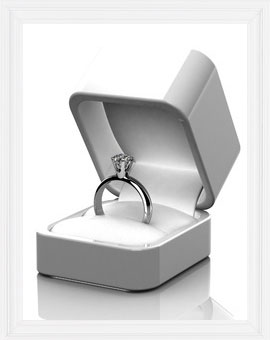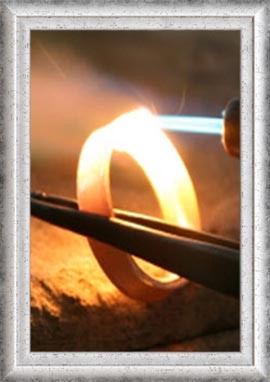Palladium Versus White Gold
The history of palladium begins with the discovery of its sister metal platinum. The noble metals, which are commonly found together, have a shared beginning that is highlighted by challenges to their widespread use. That is, until modern science and metallurgy unlocked some of the valuable characteristics each offers and has proven platinum and palladium as essential to 21st century commerce.
Palladium alloys for jewelry manufacturing usually contain 95% palladium and 5% other metals. Specific jewelry manufacturing methods like casting, machining, chain making, hand fabricating or other processes sometimes call for differing alloy ingredients. Of the popular alloys currently being used in the U.S. for palladium jewelry the common balance consists of 95% palladium, nearly 5% ruthenium. The inclusion of specific trace elements offer various benefits to the design and manufacturing process (e.g. hardness, better fluidity for casting, ease in machining) or lend to better wear of the finished jewelry.
Why Choose a Palladium Ring over a White Gold Ring ?
Palladium (atomic symbol Pd) is a platinum group metal (PGM). It is the lightest (least dense) and has the lowest
melting point of the group. Palladium is naturally white, not requiring rhodium plating for use with jewelry. It is malleable and ductile in its pure form, but too soft for jewelry unless alloyed. As an alloy containing 950 parts of palladium for jewelry purposes, it is more “pure” than white gold alloys, but the additional elements make it harder and more durable in the as cast condition. Its hardness significantly increases as it is cold worked making it ideal for jewelry and palladium wears similarly to platinum. Palladium resists oxidation at ordinary temperatures but will discolor at soldering temperatures, become brittle with careless, excessive and repeated heating and cooling cycles, and react with strong acids. One of its characteristics that cause it to be sensitive to certain jewelry manufacturing procedures is its ability to absorb considerable amounts of hydrogen and other gases especially when molten.
| Purity Palladium alloys for jewelry manufacturing have a high purity level. They are primarily alloyed with other platinum group metals and other metals for a wide variety of manufacturing methods. |
 |
 |
Wearability 950 palladium has a specific gravity of 11.8., similar to white gold (most 14-karat white gold alloys are around 12.7) and almost half that of platinum making it very comfortable to wear larger pieces. |
| Permanent Whiteness Palladium is naturally white and does not require repeated rhodium plating to keep the finished piece white during normal wear. |
 |
 |
HypoAllergenic White gold rings have a certain amount of nickel in them. Palladium rings have no nickel in them and are the perfect choice for those with sensitivity to nickel. They are hypoallergenic – unlike white gold rings. |
|
Durability
|
 |
Security Palladium rings have better luster and shine than does a white gold ring. And because the metal holds up to friction better than white gold, a palladium prong will hold up much better and last longer than does a white gold prong.
|
| Palladium wears similarly to platinum. As with any piece subjected to daily use, palladium jewelry will show surface wear over time. Surface wear is easily restored by cleaning and re-polishing—a regular practice performed by most retail service departments. Palladium alloyed for jewelry is 95 percent pure. Common alloy ingredient is ruthenium. |





